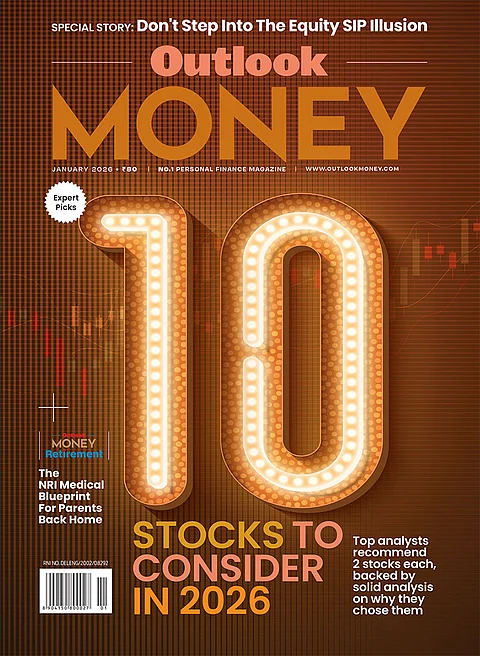IDFC Dynamic Bond Fund
Investment Strategy
IDFC Dynamic Bond’s advantages include the tenacity of lead manager Suyash Choudhary and a strong process that draws on the firm’s robust macroeconomic and fundamental research. It has blossomed under Choudhary, who took its helm in October 2010.
Given that duration is an integral part of the strategy, studying the macro scenario for taking interest-rate directional views forms the broader framework of the process. The view is determined by conducting a detailed analysis of influencing factors such as growth versus inflation, fiscal and current account deficit, private sector and government borrowings, fiscal and monetary policy view, money supply, currency market movement, and global interest-rate scenario. This is complemented by an overlay of technical factors where the team examines the supply/demand dynamics to get clarity on valuations and the direction of the yield curve. Interest-rate direction calls and anticipation of yield curve movement form the basis of portfolio positioning in duration terms. For corporate bonds, the team lays lot of emphasis on the promoter group, its track record, and corporate governance standards. Suyash will not lend to a company facing corporate governance issues. Additionally, he also looks at companies’ competitive standing vis-a-vis peers, practices, cash flows, liquidity profile, and business and financial risks, among others.

Taking credit bets is not a part of the strategy, and this has enabled him to tide over credit risk more comfortably than most of his peers. Among fixed-income funds that are run with a duration strategy, this fund ranks among the best in the industry.
Kotak Emerging Equity Fund
Manager Biography And Fund Strategy
Kotak Emerging Equity Scheme is managed by Pankaj Tibrewal, a manager with a long association with Kotak and with an overall fund management experience of more than 13 years. Harsha Upadhyaya is the CIO of equity at the fund house, and we view his presence as a positive. An eight-member analyst team with an average experience of roughly eight years supports the portfolio manager.
Pankaj Tibrewal uses a bottom-up approach with the diversified model portfolio created by analysts as his initial reference point, but he is not constrained by the same. Analysts use a combination of quantitative models using relevant ratios such as P/BV, P/E, EV/EBITDA, and so on and other valuation methodologies like DCF models to evaluate stocks. The manager looks for growth businesses with strong entry barriers and sustainable competitive advantages such as brand name, business capabilities, and/or market shares that generate steady cash flows, have capable management teams, and trade at reasonable valuations. He combines absolute and relative valuation measures to determine the fair value of stocks and invests based on a stock’s intrinsic value, valuations versus industry peers, and historical valuations. The top-down approach is not entirely ignored, as Tibrewal takes sector exposures based on their growth prospects and relative valuations compared with the broader index and with itself on a historical basis.

Tibrewal’s style of investing leads to a portfolio with a slightly long tail. Tibrewal places a lot of emphasis on protecting downside risks by paying special attention to capital efficiency, corporate governance, and liquidity while constructing the portfolio. The fund’s focus on protecting downside risks is reflected in its capture ratios.
Mirae Asset Large Cap Fund
Manager Biography And Fund Strategy
Mirae Asset Large Cap has undergone changes to people and Morningstar Category but not to its other features. Lead Manager Gaurav Misra has more than two decades of experience, and his thought process and investment style are well-integrated with the fund’s strategy.
The investment philosophy of the fund is built on three core principles: quality businesses with stable earnings, strong management, and attractive valuation. The process includes both quantitative and qualitative stock screening with bottom-up stock-picking. The sector selection is done through a top-down approach mainly based on growth prospects. Analysts then assess stocks at the industry and company levels and focus on key drivers such as returns on capital employed, returns on equity, and EBITDA margin. Within the framework, there is a lot of emphasis on qualitative analyses like management quality and execution capabilities. These are quantified by evaluating the trailing 10-year track record, which helps in removing subjectivity. There is a further focus on valuation, which becomes a key driver behind entry and exit timing. This valuation process along with quantitative factors drive the conviction level in the stock, which helps to exclude companies where business fundamentals are not solid. The strategy holds a well-diversified portfolio with a long-term perspective, helping performance

Alpha is generated mainly through stock selection rather than sector rotation. The strategy of the fund is to invest across sectors and themes. The portfolio manager is willing to ride through periods of adversity and stick to his long-term views, demonstrating patience and conviction in the stocks in which he is invested. Turnover is below the category average and taking cash calls is not part of the strategy.







